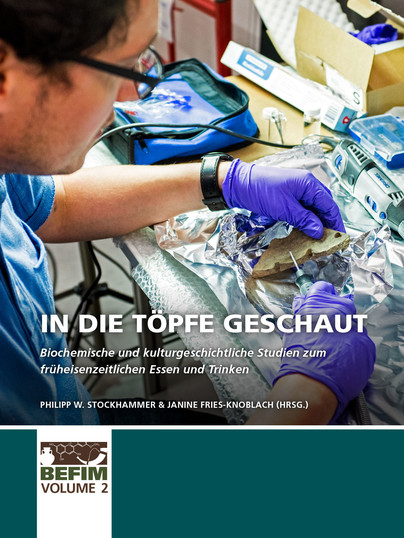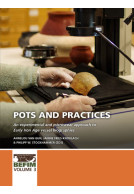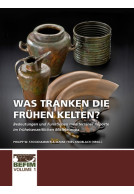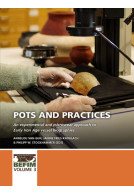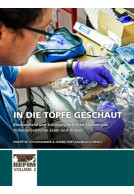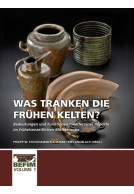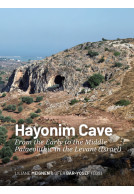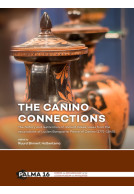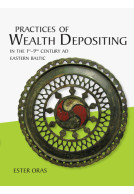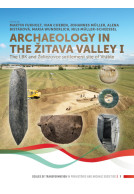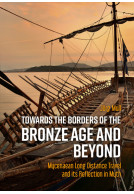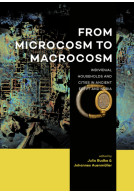In die Töpfe geschaut (Hardback)
Biochemische und kulturgeschichtliche Studien zum früheisenzeitlichen Essen und Trinken
Series: BEFIM
Pages: 330
Illustrations: 100fc/10bw
ISBN: 9789088907708
Published: 24th September 2019
Casemate UK Academic
(click here for international delivery rates)
Need a currency converter? Check XE.com for live rates
Abstract German: Band 2 der BEFIM-Reihe enthält sieben Beiträge des BEFIM-Teams und enger Kooperationspartner. Die Zwischenberichte aus Band 1 werden darin vertieft, abgeschlossen und in Gesamtinterpretationen eingebettet. Ein einleitender Artikel befasst sich einführungs- und überblicksartig mit der Aussagekraft von Biomarkern und Isotopenanalysen bei der Untersuchung alter organischer Reste. Den Kern bilden drei Aufsätze, die den eigentlichen archäologisch-naturwissenschaftlichen Ergebnissen von BEFIM gewidmet sind. Der erste Beitrag bettet die Nahrungsrückstandsanalysen an Keramik aus den Altgrabungen (1950-85) sowie aus den jüngeren Ausgrabungen in der Vorburgsiedlung (2004-08) bzw. auf dem Plateau der Heuneburg (2015) in ihren archäologischen Kontext ein. Die Keramik aus relevanten Befundzusammenhängen erlaubt hierbei eine räumlich und zeitlich differenzierte Betrachtung bezüglich Ess- und Trinkgewohnheiten und Gefäßnutzung. Im zweiten Teil werden die Analyseergebnisse für lokale und importierte Keramik aus den alten, jüngeren und laufenden Grabungen auf dem und um den Mont Lassois mit Befundkontexten und formenkundlichen Aspekten verbunden. Auf diese Weise gelingt ein Vergleich des Gebrauchs unterschiedlicher Gefäßformen und gattungen in den verschiedenen Siedlungsbereichen. Als drittes werden die Ergebnisse der Nahrungsrückstandsanalysen zum Breisacher Münsterberg in ihrem archäologischen Zusammenhang präsentiert. Darauf folgt ein Aufsatz zur musealen Umsetzung der BEFIM-Ergebnisse im Landesmuseum Württemberg in Stuttgart. Den Abschluss bilden zwei geschlechtergeschichtliche Beiträge zur Frage von Alkohol in der Lebenswelt von Frauen in alten Kulturen Europas und des Nahen Ostens unter den Aspekten von Herstellung, Ausschank, Handel, Kulthandlungen und Konsum sowie zu Geschlechterklischees bei der Interpretation eisenzeitlicher Prunkgräber. Der Band richtet sich mit seinen teils generellen, teils speziellen Aufsätzen an ein breites akademisches Publikum von Universitäten, Museen und Denkmalpflege sowie an Studierende und interessierte Laien.Abstract English:Volume 2 of the BEFIM series contains seven papers by the BEFIM team and close co-operation partners. The interim reports of BEFIM 1 are enhanced, finalised, and integrated into overall interpretations. An introductory paper provides insights into and an overview of the potential of biomarker and isotopic analysis in studying ancient organic residues. The core of the book consist of three articles on the final archaeo-scientific results of BEFIM. The first one integrates the organic residue analyses (ORA) of pottery from the old excavations (1950-85) and recent excavations at both the Vorburg settlement (2004-08) and on the plateau (2015) of the Heuneburg into their archaeological contexts. The pottery from relevant find contexts allows for a spatially and temporally differentiated view of eating and drinking habits and vessel usage. The second paper combines the ORA results of local and imported pottery from early, younger, and current excavations on and around the Mont Lassios with excavation contexts and aspects of vessel shapes. By doing so, it becomes possible to compare the use of different vessel shapes and wares in each of the settlement zones. The third text presents the results of food residue analyses from Breisach-Münsterberg in their archaeological context. This is followed by an article on the museological implementation of BEFIM’s results in the Landesmuseum Württemberg in Stuttgart. The volume ends with two gender-historical contributions, one on the question of alcohol in the female sphere of life in ancient cultures of Europe and the Near East with regard to production, distribution, trade, ritual, and consumption, the other on gender stereotypes in the interpretation of ostentatious Iron Age graves. The volume with its partly general, partly specific papers aims at both a wide academic audience (universities, museums, heritage authorities) and at students and interested non-professionals.







